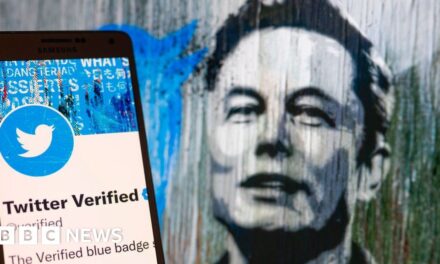
U.S. Jobless Claims Rose as Layoffs Continued: Live Updates

Applications for jobless benefits rose last week as employers continued to lay off workers six months after the coronavirus pandemic first rocked the U.S. economy.
About 825,000 Americans filed for state unemployment benefits last week, the Labor Department said Thursday. That is up from 796,000 a week earlier, though it is far below the more than six million people a week who were filing for benefits during the peak period of layoffs in the spring. Those numbers do not reflect adjustments for seasonal fluctuations.
On an adjusted basis, last week’s total was 870,000, up from 866,000 the previous week.
In addition, 630,000 initial filings were recorded for Pandemic Unemployment Assistance, an emergency federal program that covers freelancers, self-employed workers and others left out of the regular unemployment system. That program has been plagued by fraud and double-counting, and many economists say the data is unreliable.
By any measure, however, hundreds of thousands of Americans are losing their jobs each week, and millions more laid off earlier in the crisis are still relying on unemployed benefits to meet their basic expenses. Applications for benefits remain higher than at the peak of many past recessions, and after falling quickly in the spring, the number has declined only slowly in recent weeks.
“Compared to April, they’re trending down, but if you’re comparing to the pre-Covid era they are still so high,” said AnnElizabeth Konkel, an economist for the career site Indeed.
The recent letup in progress is particularly worrisome, Ms. Konkel said, because warm weather has allowed many businesses to shift operations outdoors. As colder weather hits Northern states in the weeks ahead, restaurants and other businesses are likely to begin laying off workers again.
“We’re losing steam, which is definitely not good heading into the winter,” she said.
The report on Thursday marked 27 weeks since the flood of layoffs began in mid-March. In most states, workers qualify for a maximum of 26 weeks of unemployment payments, meaning that workers who lost their jobs early in the crisis have begun to see their benefits expire.
An emergency program established by Congress in March offers an additional 13 weeks of benefits for most workers. And a separate federal program will provide extended benefits after that if the unemployment rate remains elevated. But experts on the unemployment system said there was a risk that benefits for some workers would lapse at least temporarily.
-
Stocks on Wall Street fell again on Thursday, with the S&P 500 on track to end the day in correction territory — a 10 percent drop from its recent high — as concerns about the economy persisted.
-
The index was more than half a percent lower in early trading. Through Wednesday’s close it was down 9.6 percent from its Sept. 2 record.
-
Stocks in Europe and Asian were also lower. The benchmark Stoxx Europe 600 index declined 0.9 percent while Britains, the FTSE 100 was 0.8 percent lower. The major indexes for Japan, Hong Kong and South Korea closed between 1 percent and 2.6 percent lower.
-
Investors were considering new data on unemployment claims in the United States, which showed that applications for jobless benefits rose to 825,000 last week.
-
On Wall Street, the recent stretch of losses has come as investors grow concerned that more fiscal stimulus would not be forthcoming from Congress. Those worries intensified this week after lawmakers’ attention shifted to the fight over filling Justice Ruth Bader Ginsburg’s seat on the Supreme Court before November’s election.
-
Also weighing on the broader market this month is a retreat in technology stocks. Investors had flocked to buy the shares of these dominant firms partly because of the belief that they stood to both benefit in a Covid-era economy that pushed many activities online, and emerge from the lockdowns in an even stronger economic position.
-
But in recent days, there have been growing signs of a looming government push to counter some of their power. The Justice Department has outlined plans to pursue an antitrust case against Alphabet over the dominance of online search of its subsidiary Google.
-
And on Wednesday, the Justice Department sent Congress draft legislation that would reduce legal protections for platforms like Facebook and YouTube that have shielded them from legal responsibility over what their users post.
-
Stock market volatility has been rising in the past few days as investors weigh the chances of more fiscal stimulus or progress on a coronavirus vaccine against signs that the economic recovery is losing momentum. Mark Haefele, the chief investment officer at UBS Global Wealth Management, said central bank support made equities a more attractive investment than bonds. “Overall, we maintain our constructive outlook for equities over the coming months, while acknowledging that markets will likely be choppy,” he said in a note.
-
A correction is taken as a signal that a relatively uncommon long-term sell-off is underway. Over the past 20 years, there have been 10 corrections in the S&P 500. The last one was earlier this year, as stocks melted down over concern about the economic impact of the coronavirus pandemic.

The outlook for German growth continued to improve in September, according to a survey of business managers that has a good track record of predicting the direction of Europe’s largest economy.
The survey of business expectations by the Ifo Institute in Munich, probably Germany’s most closely watched economic indicator, rose for the fifth month in a row.
But economists say the rebound in Germany and the rest of the eurozone is likely to slow in coming months because of a resurgence of the coronavirus.
The bloc is entering a “tricky transition period” as government stimulus programs start to run their course, said Marion Amiot, senior economist at S&P Global Ratings. “The reopening of economies was the easiest part of the recovery,” she said in a note.

Rishi Sunak, Britain’s top financial official, on Thursday announced a range of new and extended measures to protect jobs and help businesses, including another government wage-paying program, just days after the prime minister, Boris Johnson, set new social restrictions to curtail the spread of the coronavirus that he warned could last for months.
The Treasury had been under increasing pressure to announce a successor to a furlough program that has supported the wages of as many as 9.6 million workers at a cost of 39.3 billion pounds, or $50.1 billion. The program is set to end Oct. 31, and Britain’s statistics agency said about 11 percent of the work force was still using it.
It will be replaced by a program in which the government and employers will share the cost of the wages for workers on shorter hours, similar to Germany’s Kurzarbeit, or short-work program.
“It is now clear, as the prime minister and our scientific advisers have said, for at least the next six months, the virus and restrictions are going to be a fact of our lives,” Mr. Sunak, the chancellor of the Exchequer, told the House of Commons.
On the decision to end the furlough program, he said that “it is fundamentally wrong to hold people in jobs that only exist inside the furlough” and that the new program would keep people in jobs that provided “genuine security.”
Late on Wednesday, the Treasury said it would scrap the introduction of a budget in November, which would have offered a long-term plan for the economic recovery. Instead it announced the short-term measures introduced by Mr. Sunak on Thursday. Among the details:
-
A new wage-support program for workers whose hours have been reduced. Under the plan, employees must work at least a third of their normal hours, and the company will pay these wages. For the lost hours, the company will pay a third of the wages, the government will pay another third and the employee will forgo the last portion. The program will run from Nov. 1 for six months.
-
The government extended the reduction in VAT, a type of sales tax, for the hospitality and tourism industries, until the end of March.
-
The Treasury will also extend four business loan programs that are backed by the government, and allow companies to lengthen the time they need to repay these loans.
-
Sephora is working with Instacart to offer same-day delivery of beauty products to customers, according to an announcement on Wednesday, in another example of retail changes wrought by the pandemic. The offering, which will get Sephora products to Instacart users in as little as an hour, will start at certain California stores and expand to more than 400 locations in coming weeks, according to Sephora.
-
The E.W. Scripps Company said on Thursday that it would buy ION Media for $2.65 billion, combining the business with Scripps’ Katz networks and Newsy to create a national news network. ION, which operates a national television network featuring crime and justice shows, has the fifth-largest average prime-time audience among all cable networks and owns television stations in 62 markets, reaching 96 percent of U.S. homes, according to a news release.
-
Harley-Davidson announced additional restructuring moves on Thursday in a regulatory filing, which include discontinuing its sales and manufacturing operations in India and laying off 70 employees there. The motorcycle maker had previously disclosed its restructuring plan — a process it is calling “The Rewire” — that were approved through Aug. 5. The company says it expects the new restructuring activities to be completed within the next 12 months, and that more restructuring changes are likely to come.
-
Walt Disney Studios said on Wednesday that it would hold off releasing several major films, including “Black Widow,” a Marvel superhero spectacle, and Steven Spielberg’s “West Side Story. Disney did not offer an explanation for the scheduling changes — eight in total — but the studio’s reasoning was obvious. Theaters in Los Angeles and New York, the No. 1 and No. 2 movie markets in the United States, remain closed and government officials have given no indication when they could be allowed to reopen. The coronavirus is surging anew in Europe. Theaters in Latin America remain closed.

United Airlines, in coordination with officials in Hawaii, will allow passengers flying to that state from San Francisco to skip the state’s 14-day quarantine requirement if they test negative for the coronavirus before departure.
Hawaii said last week that it would allow all visitors to test out of its quarantine requirement. United is the first of the four large U.S. airlines to arrange testing for its customers.
The tests will be available as part of a pilot program that starts on Oct. 15, the day that the new policy goes into effect.
Passengers who choose to be tested will have two options: they can take a rapid test at the airport before their flight, receiving results in about 15 minutes; or they can chose a swab test they would have to administer to themselves at home a few days before their departures. The rapid test is expected to cost about $250 and the at-home test is expected to cost about $80. Customers who test positive will be allowed to reschedule their flights.
Janet Lamkin, United’s president for California, said the airline had been developing the program for three to four months, working closely with Hawaiian officials to ensure that the pilot program met the state’s requirements and freed passengers from the its quarantine.
United, which is second only to Hawaiian Airlines in the number of passengers it flies to the state, operates daily flights from San Francisco to Honolulu, Maui and Kona. On Oct. 15, it plans to resume service to Lihue and add more flights to Maui and Kona. Hawaii has been successful in limiting the spread of the coronavirus in recent days and has seen fewer total cases than all but a handful of other states.
The rapid test, which United has already been using with employees, will be administered at San Francisco International Airport before security. The at-home test will be mailed to passengers. If successful, United hopes to expand the pilot program to include other destinations and airports.

Tyler Lindsay worked as an event sales manager at Hornblower Cruises for four years before he was furloughed on March 17, when the pandemic hit and cruise operations ground to a halt. He was permanently laid off on Aug. 17, after the cruise line decided to suspend New York operations at least through the spring.
Mr. Lindsay, 47, received $900 in a lump sum last week from Lost Wages Assistance, a short-term program that provides $300 a week from federal disaster funds. He expects to receive another $900 this week.
That money, which includes retroactive payments, will go toward the roughly $1,000 in October rent and $250 in utilities for his apartment in the Prospect Lefferts Gardens neighborhood of Brooklyn. But the program’s funding has ended, so Mr. Lindsay will have to look for longer-term solutions.
“Every little bit helps,” he said. “But it’s still not enough.”
After he was furloughed, Mr. Lindsay began receiving $504 a week in New York State benefits, plus a $600 weekly federal supplement to unemployment insurance. But since the supplement ended in late July, he has used $2,000 of his savings since the pandemic hit to pay for rent and buy groceries, while cutting back on expenses.
“When the $600 was still here, I still felt comfortable ordering takeout or meeting a friend out to get drinks,” he said. “But now I’m a lot more conscious of not being able to do that.”
Mr. Lindsay said he had lost hope of employment in the event industry in New York and was considering moving somewhere like Florida, where he thinks he would have more opportunity to find work at weddings and parties because virus-related restrictions are looser. But the idea makes him nervous.
“Do I want to risk my life and throw myself into a situation where there aren’t proper Covid practices?” Mr. Lindsay asked. “But at the same time, things don’t appear to be getting better here in New York City financially. So it’s a predicament.”

A key source of federal aid to the unemployed is running out — again.
In March, Congress created a program to add $600 a week to workers’ unemployment checks. When that program expired at the end of July, President Trump stepped in with a stopgap replacement: $300 a week in extra benefits, paid out of an existing emergency fund. (States had the option of adding $100 out of their own budgets; few chose to do so.)
But that program, Lost Wages Assistance, had enough money for only six weeks of payments. Because the program is retroactive to the week that ended Aug. 1, it lasted through the first week of September in most states.
Confusingly, many workers have yet to begin receiving payments — or are just starting to get them — because many states took weeks to get the program running. So workers in some states will receive a lump sum to cover retroactive benefits, and nothing more.
Congress could decide to appropriate more money for the lost wages program, or to revive the $600 supplement in some form. But with the Senate focused on a Supreme Court confirmation battle, there is little sign of imminent help.

Square, the financial company known for its credit card readers, Cash payments app and Square Capital lending program, announced that it would invest in an array of funds and lenders focused on underserved communities of color, as first reported in today’s DealBook newsletter. It joins a growing number of big businesses taking on racial economic inequality as a core part of its business.
Square promised to invest $100 million, or about 3 percent of the cash it held as of June, in four chunks.
About $25 million will be deposited at Community Development Financial Institutions, or C.D.F.I.s, and Minority Depository Institutions, or M.D.I.s. By parking some of its cash with these firms — much as Netflix has said it would — Square hopes to bolster their ability to lend in underserved communities.
About $50 million will be split evenly between The Keepers Fund, a vehicle meant to invest in M.D.I.s., and the Black Economic Development Fund, which was created to support Black-led banks and businesses. The remaining $25 million will be reserved for future programs.
The initiative grew out of a move last year in which Square deposited $5 million with C.D.F.I.s, said Amrita Ahuja, Square’s chief financial officer. That plan was devised by Square’s treasury and government relations teams, with senior executives only learning about it later. (“Our leadership team were surprised — and loved it,” she said. That group includes Jack Dorsey, a co-founder and the chief executive of the company.)
Company executives planned an expansion of that effort this summer, when the plan took on new urgency as executives saw data on how badly Black communities were hurt by the pandemic.
Ms. Ahuja said that the move fit Square’s corporate mission of helping businesses grow through finance. “Part of the reason that Square exists is for this very purpose,” she said. “It’s not just doing good in the world, it’s good business, too.”

















